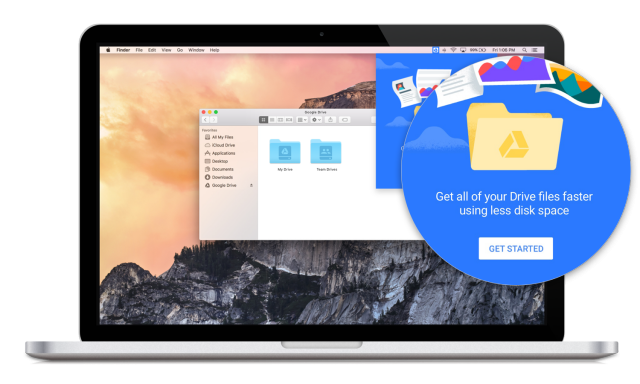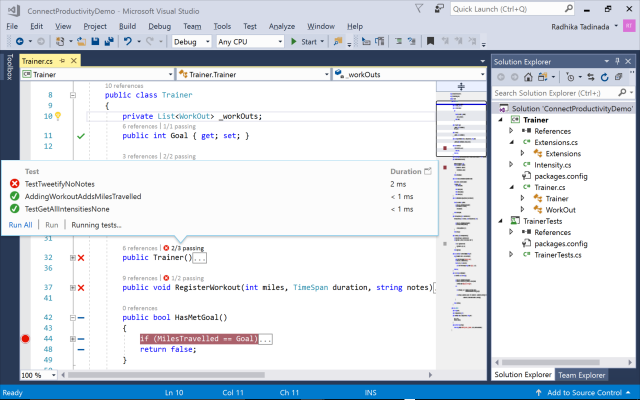
CPUMon is a lightweight performance gadget
CPUMon is a simple desktop gadget which can plot CPU usage and display free and used RAM in real time.
You can do this already -- and a lot more -- in the Windows 10 Task Manager, of course (check the Performance tab), but that’s a bulky dialog which grabs more screen real estate than you might want to spare.

Find, monitor and log your external IP with TrueIP
When you’re online you might occasionally want to know your external IP address, perhaps to confirm the internet connection you’re using or find out whether a VPN is working.
The easiest way to do this is via a browser window. A site like WhatIsMyIP.com will display your address immediately, or you could simply enter IP at Google, and your address will be top of the search results.

Windows XP more popular than Windows 10 with businesses
If you are keeping track of Windows 10's adoption, you probably know that the operating system has hit a plateau. According to NetMarketShare, it has been hovering around the 25 percent usage share mark for a few months now. That said, it still remains the second most-popular version of Windows (and OS), coming after Windows 7.
However, if we look at the business space in particular, Windows 10 is actually nowhere near as popular with PC users. Microsoft's latest operating system lags far behind Windows 7 and Windows XP too. One might expect Windows 7 to come out ahead, the fact that Windows XP ranks higher may come as a surprise.

Android is more popular than Windows... for getting online
We already know that interest in Windows 10 is on the wane, but now Android is more popular than any version of Windows with Internet users. Google's mobile operating system has overtaken Windows as the preference for getting online for the first time.
Usage figures published by StatCounter show that Android accounted for 37.93 percent of the worldwide OS Internet usage share in March. Windows is not far behind at 37.91 percent, but Android taking the lead is being described as a "milestone in technology history."

Outdated programs main cause for security incidents
Did you update Flash on your PC? How about Java? According to cybersecurity firm Avast, you probably didn't -- and that's the number one cause of cybersecurity incidents.
Avast just released a new report, entitled Avast PC Trends Report January 2017, which is based on insights from the company’s AVG TuneUp product, and says that more than half (52 percent) of the most popular PC applications have outdated installations on consumers' devices.

DoubleAgent exploit uses Windows' Microsoft Application Verifier to hijack antivirus software
Security researchers at Cybellum have revealed details of a zero-day exploit that makes it possible for an attacker to take full control of antivirus software. The technique can be used to take control of just about any application, but by focusing on antivirus tools, the illusion of safety offered to victims means they are likely to be completely unaware of what is happening.
The attack works by exploiting the Microsoft Application Verifier that's built into Windows. It is possible to replace the tool with a custom verifier which can then be used to inject malicious code into any chosen application. A number of well-known antivirus tools -- including Avast, BitDefender, ESET, Kaspersky, and F-Secure -- are vulnerable, while patches have been released for others.

Logitech launches MK850 Performance Wireless Keyboard and Mouse Combo for Windows, Mac, Android, and iOS
If you are like me, running just one operating system isn't enough -- maybe you dual boot or have multiple computers. I, for example, have a Windows 10 desktop, MacBook Pro laptop, and a Linux box. The problem with this setup, you see, is that my desk gets very crowded and messy. Believe it or not, I have just one monitor for all of my computers (I switch between HDMI and DisplayPort), but multiple keyboards, touch pads and mice -- it can be distracting.
Today, Logitech launches a brilliant product that should solve my dilemma. The MK850 Performance Wireless Keyboard and Mouse Combo works with Windows, Mac, Android, Chrome OS and iOS. It should work with desktop Linux distributions too, such as Ubuntu and Fedora. With the click of a button, both the keyboard and mouse can switch between up to three computers or operating systems. This includes mobile devices, such as tablets and smartphones (the mouse will not work with iOS, however). Best of all, both of the input devices are ergonomic and look elegant.

Kdenlive is a powerful video editor for… Windows?
Kdenlive has been a popular non-linear video editor in the Linux world for a very long time, but the developers have also recently released a first Windows port.
The build doesn't skimp on functions: there's a full multi-track timeline and an array of effects and transitions to explore.

Google beta testing placeholders on Google Drive
Google has announced that it plans to introduce placeholders on Google Drive. The search giant is currently beta testing the new feature, which is officially called Drive File Stream, with the help of G Suite users as part of the Early Adopter Program.
Drive File Stream enables users to access content stored in their Google Drive account without actually downloading it on their device. It works similarly to Dropbox Smart Sync or OneDrive placeholders on Windows 8.

iClever Tri-folding Wireless Keyboard with Touchpad IC-BK08 [Review]
Around a year ago I took a look at the iClever Tri-folding Backlit Bluetooth Keyboard, having previously examined the iClever Portable Foldable Bluetooth Keyboard. The latest addition to the range follows in the footsteps of its predecessors, but this time boasts a trackpad.
This is a Bluetooth keyboard that can be configured to connect to up to three devices -- phones, tablets, laptops, and so on. The keys are nearly full-sized (just 9 percent smaller than normal), and the right-hand side of the fold-out unit is occupied by a laptop-style trackpad that allows for easier control of the device you connect to, and eliminates the need to carry a mouse as well.

0patch pushes out another Windows patch, but will leave the real work to Microsoft
Last week 0patch produced what was described as the first 0-day patch for Windows in lieu of Microsoft's usual Patch Tuesday release. It came after Google revealed a pair of vulnerabilities affecting IE/Edge and Windows.
Having addressed the problem in Windows, 0patch is at it again, this time patching the "type confusion" bug (CVE-2017-0037) that plagues Internet Explorer and Edge. This patch is described as an attempt to "release a simple temporary patch that blocks an attacker than try to create a perfect patch", and it's available for anyone who is willing to place their trust in third-party patching.

Microsoft releases Visual Studio 2017, Visual Studio for Mac Preview 4
Microsoft today releases Visual Studio 2017 and the fourth preview of Visual Studio for Mac. The latest official version of its longstanding IDE for Windows adds improvements related to productivity, performance, mobile apps, cloud development, DevOps and the ecosystem surrounding Visual Studio.
Visual Studio 2017, according to Microsoft's blog post announcing the release, features an improved startup and project load times, better navigation, the ability to edit files without having to open a project or solution, CMake support and Linux support for C++, Xamarin Forms Previewer, a new Connected Services experience, the ability to build .NET Core 1.0 and .NET Core 1.1 apps, support for Azure App Service and more.

0patch creates a 0-day patch for Windows gdi32.dll vulnerability before Microsoft
Following the revelation of vulnerabilities in Windows, Internet Explorer and Edge by Google, and the delaying of the traditional Patch Tuesday, Microsoft security update practices have been in the spotlight. Google's Project Zero has exposed security issues that Microsoft is yet to fix, so a third party has decided to step in to help out.
A new project going by the name of 0patch has created a "0patch" for a zero-day, addressing the Windows gdi32.dll memory disclosure (CVE-2017-0038) yet to be fixed by Microsoft. As the issue is unlikely to receive an official patch until at least the middle of March, this third-party option is all that's available for now.

Windows botnet spreads Mirai malware
Security researchers from Kaspersky Lab are currently investigating the first Windows-based spreader for the Mirai malware, something that can have huge implications for companies that invested heavily in IoT.
The spreader was apparently built by someone with "more advanced skills" than those that had created the original Mirai malware. This, Kaspersky Lab says, has "worrying implications for the future use and targets of Mirai-based attacks."

PCs still at risk from end-of-life programs
The latest software vulnerability report from Secunia Research at Flexera Software reveals that the average US private PC user has 75 installed programs on their PC, 7.4 percent of which are no longer patched by the vendor.
More detailed analysis of the findings shows that 7.5 percent of users had unpatched Windows operating systems in the final quarter of 2016, up from 6.1 percent in Q3 of 2016 and down from 9.9 percent in Q4, 2015.
